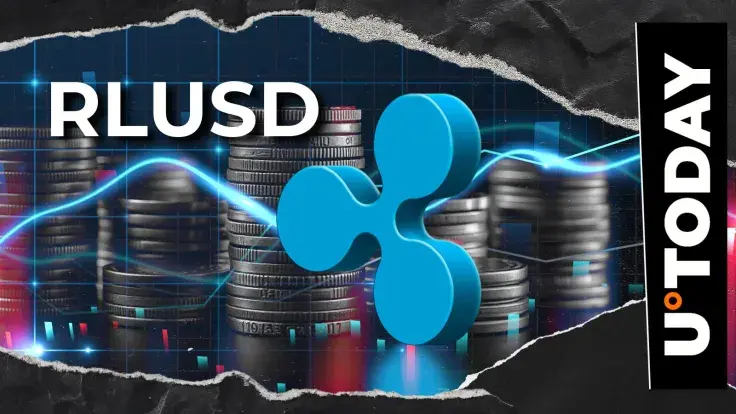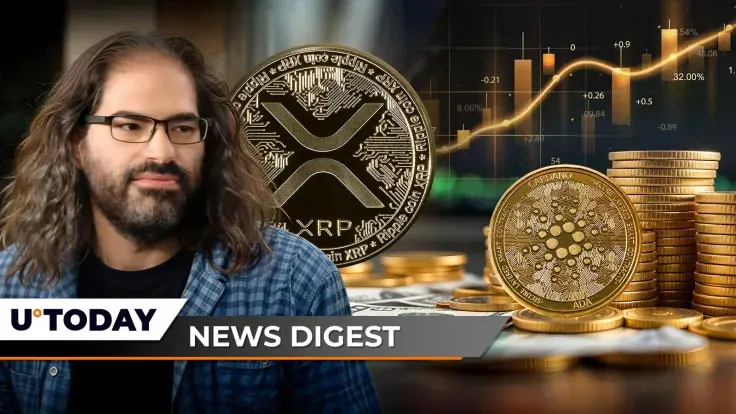RLUSD Dominates DeFi: Ripple's Stablecoin Becomes Key Collateral on Aave

The cryptocurrency landscape is currently experiencing significant developments across various fronts, from institutional adoption to blockchain fundamental discussions and individual asset price movements. A prominent example of innovation bridging traditional and decentralized finance (TradFi and DeFi) is Aave Labs' recently launched institutional lending platform, 'Horizon.' This platform is designed to leverage tokenized products as collateral, marking a crucial step towards integrating established financial systems with the burgeoning world of blockchain.
A key component of Horizon is Ripple's highly regulated RLUSD stablecoin, which Ripple asserts will usher in "a new era of efficiency for on-chain finance." Reece Merrick, Ripple's managing director for the Middle East and Africa, emphasized the stablecoin's significant role in the new platform. The demand for RLUSD has been notable, with Aave enabling its supply and borrowing in April, leading to an impressive $76 million worth of RLUSD being supplied within a single day. Jack McDonald, Ripple's senior vice president of stablecoins, highlighted the "exploding" growth of stablecoins in July, underscoring their increasing importance. Beyond RLUSD, Horizon also supports Circle's USDC and Aave's native GHO, and offers initial collateral options such as Circle’s USYC yield fund and VanEck’s VBILL fund. The platform facilitates the tokenization of diverse assets, including U.S. Treasuries, corporate bonds, and money-market funds, through partnerships with entities like Superstate and Securitize, thereby robustly bridging the gap between DeFi and TradFi.
In a separate but related discussion concerning the foundational principles of blockchain technology, Ripple's Chief Technology Officer, David Schwartz, recently addressed resurfacing speculation regarding a potential XRP Ledger fork. Schwartz elucidated that any public layer-one blockchain can theoretically undergo a fork if its participants reach a disagreement on rule changes. He stressed that, unlike permissioned systems, open blockchains empower those who oppose such changes to initiate a fork and operate their own version. While Schwartz considers forks primarily as fallback options rather than genuine growth opportunities, he acknowledged their theoretical benefits, such as potentially doubling throughput and enabling each side to concentrate on specific use cases. However, he pragmatically pointed out the market's tendency for capital and activity to consolidate around the perceived stronger chain, often sidelining the alternative. As Schwartz observed, "The market seems to want to pick the better side," framing forks more as reactive measures than proactive growth strategies.
Meanwhile, market observers are also keenly watching the price movements of specific digital assets, with Cardano (ADA) currently in the spotlight for its potential to pare off recent losses. Cardano’s price was noted at $0.8683, reflecting a modest 0.95% increase over 24 hours, as it works towards recovering from a challenging start to the week. Technical analysis on the three-hour chart reveals a looming "golden cross," a bullish indicator where the 9-day Moving Average is intricately entangled with the 26-day Moving Average. For Cardano to capitalize on this formation and break its current dormancy, it will require sustained buying momentum, with a short-term target set at the $0.90 mark. The asset has recently navigated varied price scenarios, indicative of an ongoing bull-bear tussle in the market.
You may also like...
Mayhem and Mystery: Laser Pens, Crowd Fights & Bizarre Ads Plague Serbia vs England Clash!

England secured a dominant 5-0 win against Serbia in a World Cup qualifier, a match marred by unsettling crowd incidents...
World Cup Qualifier Shocker: Super Eagles Fight for Survival Against South Africa Amidst Osimhen Injury Drama!

In a critical 2026 FIFA World Cup qualifier, Nigeria and South Africa battled to a 1-1 draw at the Toyota Stadium in Blo...
007 Shake-Up: James Bond Frontrunner Fuels Casting Speculation with Conflicting Statements

Mike Dickman, a rising British actor, has been linked to the vacant James Bond role while building an impressive portfol...
Live Aid Revisited: Unearthing the Event's Complex Legacy and Rebel Artists

Live Aid, the monumental 1985 charity concert, successfully raised millions for Ethiopian famine relief through iconic p...
Unveiling the 2025 MTV VMAs: Winners, Performers, and Presenters Revealed!

The 2025 MTV Video Music Awards, held at New York's UBS Arena, celebrated music's top artists with Lady Gaga leading the...
Love Takes Flight: Taylor Swift and Travis Kelce's Epic Engagement Revealed!

Travis Kelce opens up about his two-year relationship with Taylor Swift, highlighting its surprising normality despite p...
Oasis Roars Back: Reunion Rocked by Ticketmaster Feud and 'Free Rider' Slam!

Oasis has kicked off its highly anticipated reunion tour with bassist Andy Bell confirming his return, but the comeback ...
Explosive Claims and Defense: Alexander Brothers Case Rocked by Accusations and Legal Counterarguments

Luxury real estate moguls Oren, Alon, and Tal Alexander face sex trafficking and assault charges from over 60 alleged vi...
